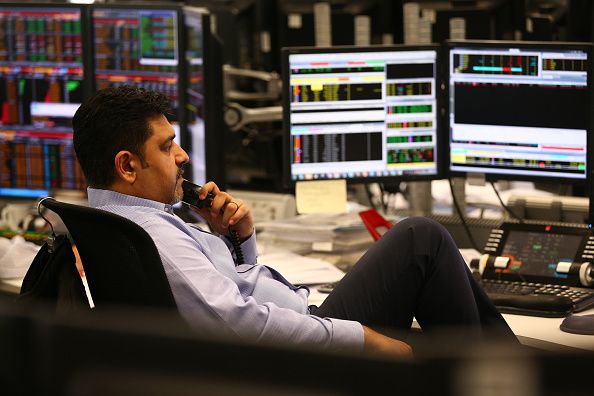
Stock markets in Europe broadly finished a little higher yesterday on the news that Germany will relax some of its restrictions in relation to the lockdown.
Some businesses will re-open next week, and schools will re-open next month. Austria, Italy, and Spain have allowed resumption of some businesses, so the news out of Germany was welcomed. Governments are clearly keen to unwind the restrictions in a measured fashion, but the message is positive nonetheless. When it comes to the lockdowns, some countries in Europe are going in the opposite direction, as France and the UK have extended their lockdowns into May.
The US economy continues to reel from the Covid-19 crisis. The latest jobless claims report came in at 5.24 million. The reading was awful, but traders took some solace in the fact that this was lower than the 6.6 million in the previous week. A fall in the rate of people applying for unemployment benefit is encouraging, but given the astronomical number, it’s hard to get too excited. When you tot up the last four reports, they show that more than 22 million people applied for unemployment insurance. It is staggering to think that more than 20 million people lost their jobs in one month.
The impact of the health emergency was seen in other economic reports. The Philly reading crashed from -12.7 in March to -56.6 in April. The housing data for March was bad too, and keep in mind the pandemic didn’t impact the economy until the middle of the month. Building permits fell by 6.8%, while housing starts slumped by 22.3%.
Seven US states extended their lockdowns until mid-May. President Trump laid out his plan for re-opening the US economy. The guidelines are only recommendations, so state governors will make the decision about lifting the restrictions. The guidelines for phase one include social distancing, but if the conditions are met, some restrictions can be lifted. The president said that as many as 29 states could be in a position to relax their lockdowns soon. If there is no evidence of a rebound in cases, then the restrictions can be eased up even more – that is phase two. There are three phases in total.
US stocks finished higher last night as the S&P 500 gained over 0.5%, but tech stocks led the way as the NASDAQ 100 rallied 1.9%. Amazon and Netflix set new record highs. A couple of hours after the close of trading in New York, it was reported that Covid-19 patients are responding well to remdesivir – an antiviral drug produced by Gilead Sciences. It is believed that most patients had ‘rapid recoveries in fever and respiratory symptoms’. The news sent US index futures higher, and it paved the way for a positive session in Asia. European markets are being called higher.
Overnight China posted a number of important economic reports. GDP for the first three months came in at -6.8% while the consensus estimate was -6.5%. Keep in mind the economy grew by 6% in the final quarter of last year. Annualised retail sales for March fell by 15.8%, and traders were expecting -10%. The February reading was -20.5%. Industrial production was -1.1%, while the consensus estimate was -7.3%. The previous reading was -13.5%.
Neel Kashkari, the head of the Federal Reserve Bank of Minneapolis, said that major US banks should raise over $200 billion in funds. The central banker also recommended the bank cancels their dividends too. Mr Kashkari used a medical analogy, and said the banks could ‘vaccinate themselves’ against the economic downturn that is on the horizon.
This week the big names in US banking posted their latest quarterly results, and the main theme was that banks were setting aside vast sums of money as they predict that bad debt will surge. The big six banks have collectively put aside more than $25 billion for loan loss provisions. During the credit crisis, the banks had several rounds of write-downs on loans, and with the way the Covid-19 crisis is shaping up, those provisions might not be enough.
The US government’s paycheque protection programme – the lending scheme set up to assist small firms – has exhausted its pot of nearly $350 billion. The speed at which the funds were used is incredible. There is talk of another $250 billion being set aside, but those funds would also probably be depleted quite quickly.
According to the Bank of England’s credit conditions survey, demand for credit from businesses is expected to rise in the second quarter, but corporate and mortgage defaults are tipped to rise too.
The oil market stabilised yesterday after enduring a painful day on Wednesday. WTI ended the session largely unchanged, while Brent crude gained a small bit of ground. Oil might be off its recent lows, but sentiment is likely to remain weak in the near term. There are major demand woes hanging over oil, and the shocking economic reports that have been posted recently add weight to the argument that demand for the energy is set to slump in the short-to-medium term.
The US dollar pushed higher yesterday as the greenback attracted some safe-haven funds. The US dollar index fell to its lowest level in over two weeks on Tuesday, but it has rebounded in the past two sessions.
The final reading of eurozone CPI for March will be posted at 10am (UK time). Economists are expecting no change from the flash reading of 0.7%. The February level was 1.2%. The core reading is tipped to be unchanged from the flash report, which was 1%.
EUR/USD – while it holds below the 100-day moving average at 1.1027, the currency pair could lose further ground. Support might be found at 1.0768, and a break below it might pave the way for 1.0636 to be tested. A move through 1.1027 might put 1.1147 on the radar.
GBP/USD – has been in an uptrend since late March and resistance might come into play at 1.2650 – 200-day moving average. Beyond that metric, the 1.2800 region might act as resistance too. A move lower from here might see it target 1.2360.
EUR/GBP – has been pushing lower since mid-March and should the bearish trend continue it might target 0.8612 – the 100-day moving average. A rebound might target 0.8865 or 0.9000.
USD/JPY – is in a negative trend and further losses from here might see it target 106.91. A move through 106.91 might put 106.00 on the horizon. A move above 109.38 could see it target 110.00.
Disclaimer: CMC Markets is an execution-only service provider. The material (whether or not it states any opinions) is for general information purposes only, and does not take into account your personal circumstances or objectives. Nothing in this material is (or should be considered to be) financial, investment or other advice on which reliance should be placed. No opinion given in the material constitutes a recommendation by CMC Markets or the author that any particular investment, security, transaction or investment strategy is suitable for any specific person. The material has not been prepared in accordance with legal requirements designed to promote the independence of investment research. Although we are not specifically prevented from dealing before providing this material, we do not seek to take advantage of the material prior to its dissemination.






















